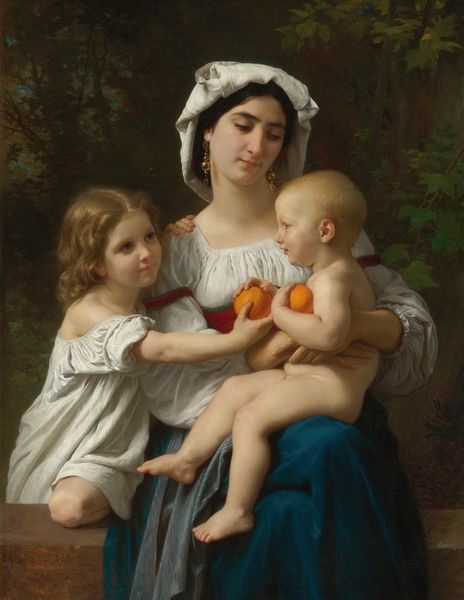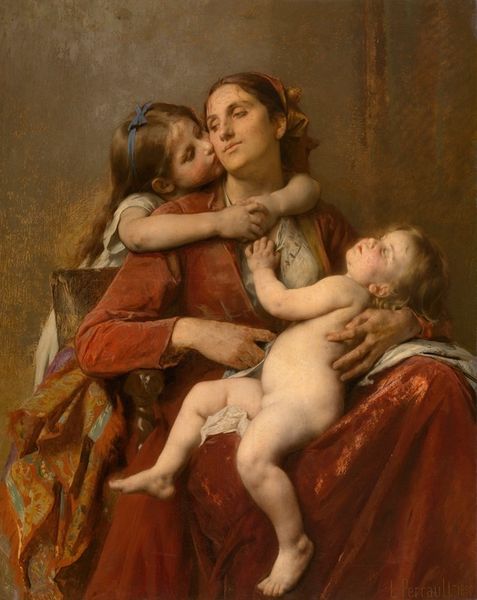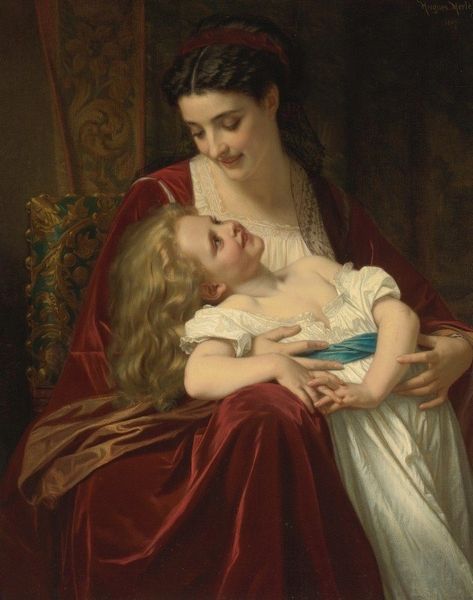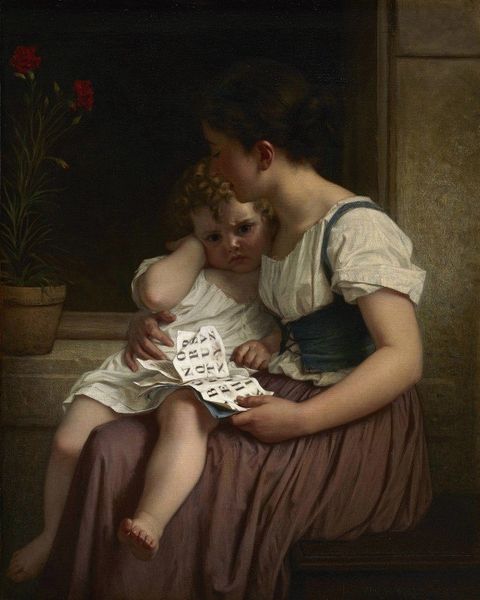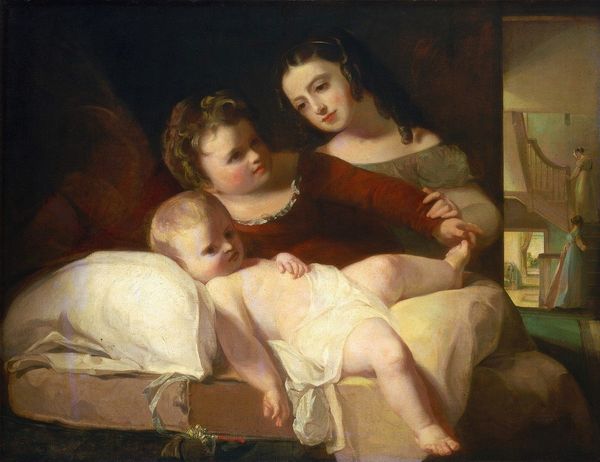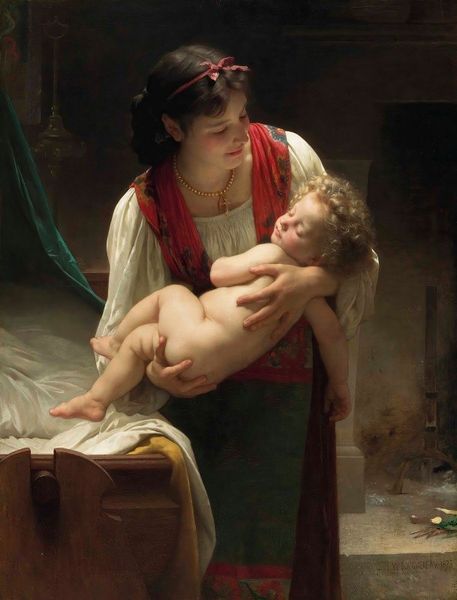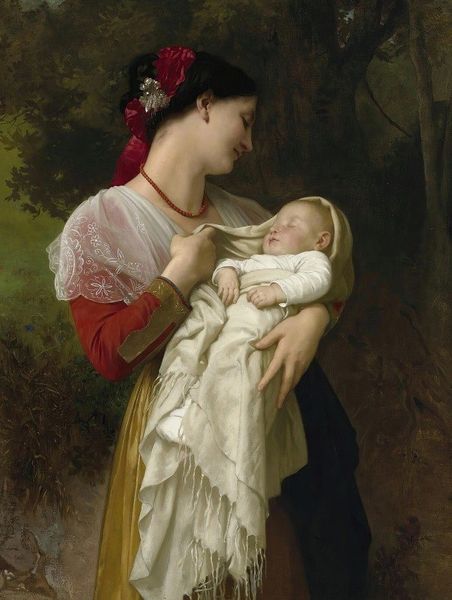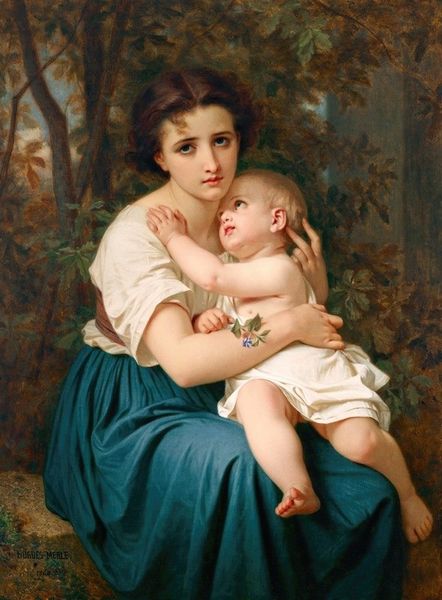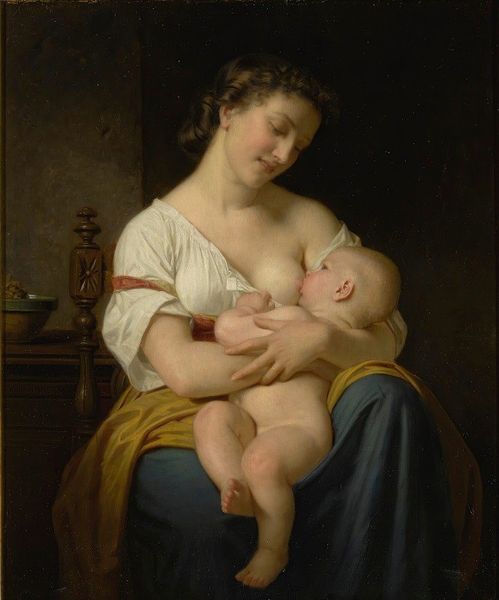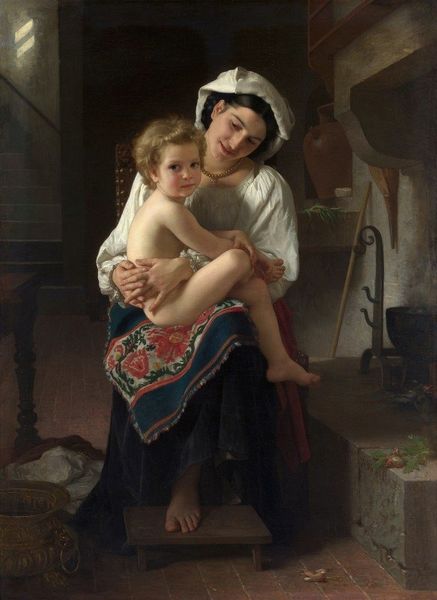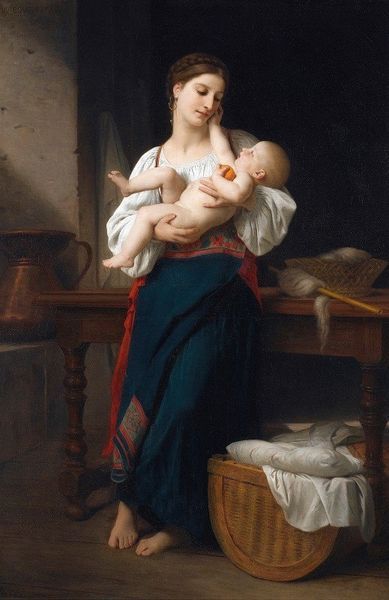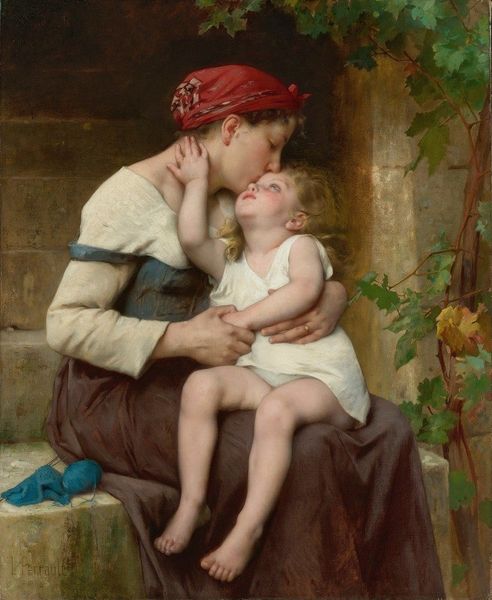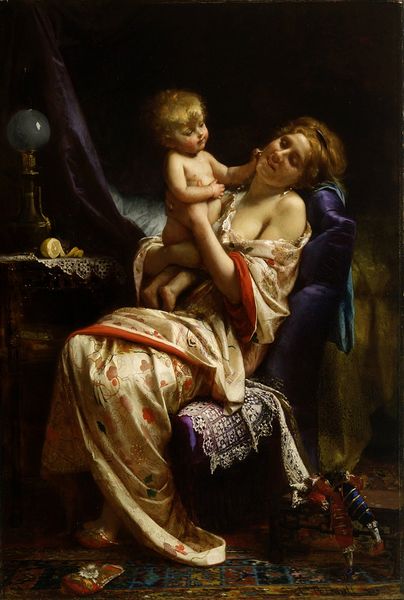
painting, oil-paint
#
portrait
#
figurative
#
painting
#
oil-paint
#
figuration
#
romanticism
#
genre-painting
#
history-painting
#
academic-art
#
realism
Copyright: Public Domain: Artvee
William Bouguereau likely painted Le Réveil during the late 19th century, a period when academic art celebrated idealized beauty and domesticity. The painting depicts a serene domestic scene: a mother cradling a waking baby, while a young child looks on with adoration. Bouguereau was known for his sentimental portrayals of women and children, often romanticizing the realities of motherhood. While seemingly innocent, the artwork reveals the prevailing social norms of the time, reinforcing women's roles as caregivers and symbols of purity. The mother's composed demeanor and the children's cherubic features evoke a sense of idealized femininity. However, one might ask, at what cost does this ideal come? What aspects of lived experience are erased from the canvas? "Each brushstroke is a caress" Bouguereau once stated. Ultimately, the emotional appeal of "Le Réveil" lies in its ability to tap into universal feelings of love and tenderness, even as it perpetuates a limited view of women's identities.
Comments
No comments
Be the first to comment and join the conversation on the ultimate creative platform.
